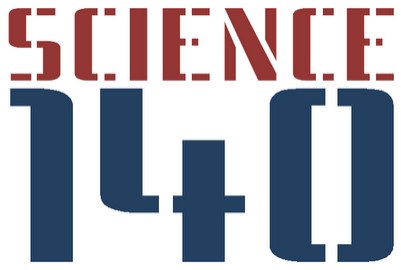A short press release in its PressPac earlier this week from the American Chemical Society mentioned intelligent alien dinosaurs. It was bound to pique the interest of the tabloids, wasn’t it? The Daily Mail ran with the bizarre headline:” Welcome new lizard overlords – New study suggests alien worlds super-intelligent dinosaurs.
Of course, the actual paper on which the release was based was nothing to do with dinosaurs or in fact any kind of alien, although it does mention them and the ACS PressPac item does lead on the dinosaurs and has some nice dramatic dino pictures! The paper was actually about chemists trying to understand why we have only one handed forms of amino acids and sugars on earth and how this may or may not have underpinned the emergence of life. An important but relatively mundane topic as far as the general public is concerned.
However, the ACS item and the paper from Ronald Breslow did stretch and extrapolate the concept quite wildly.
According to the PressPac: “Breslow describes evidence supporting the idea that the unusual amino acids carried to a lifeless Earth by meteorites about 4 billion years ago set the pattern for normal amino acids with the L-geometry, the kind in terrestial proteins, and how those could lead to D-sugars of the kind in DNA.”
That’s fine, nothing to do with dinosaurs or aliens. But, then it goes on to say:
“An implication from this work is that elsewhere in the universe there could be life forms based on D-amino acids and L-sugars. Such life forms could well be advanced versions of dinosaurs, if mammals did not have the good fortune to have the dinosaurs wiped out by an asteroidal collision, as on Earth. We would be better off not meeting them.”
Yes, the implication is that the chirality of putative amino acids on extraterrestrial worlds may well be of the opposite handedness, but how does that then make this fantastical leap to planets with intelligent alien dinosaurs? I really cannot see the connection between figuring out the origin of homochirality and extrapolating to alien dinosaurs…just bizarre. Breslow is an incredibly well-respected scientist, was he simply joking? Is this something to do with getting the “banned” word dinosaur back into education following the publication of the NYC DofEd’s 50 offensive words list?
Maybe on some alien world there is an emeritus dinosaur chemistry professor musing on the fact that the human tabloid media simply loves aliens and dinosaurs…or maybe not.
 Breslow, R. (2012). Evidence for the Likely Origin of Homochirality in Amino Acids, Sugars, and Nucleosides on Prebiotic Earth Journal of the American Chemical Society DOI: 10.1021/ja3012897
Breslow, R. (2012). Evidence for the Likely Origin of Homochirality in Amino Acids, Sugars, and Nucleosides on Prebiotic Earth Journal of the American Chemical Society DOI: 10.1021/ja3012897
 A strip test for mercury in water samples offers results comparable with spectroscopic measurements, according to researchers in China. A Ningbo U team has developed a test strip based on functionalised gold nanoparticles that cause a colour change if mercury is present in a sample at just 3 nanomolar concentrations, lower than the US EPA’s drinking water limit (10 nM). Highly sensitive and highly selective for the hazardous metal.
A strip test for mercury in water samples offers results comparable with spectroscopic measurements, according to researchers in China. A Ningbo U team has developed a test strip based on functionalised gold nanoparticles that cause a colour change if mercury is present in a sample at just 3 nanomolar concentrations, lower than the US EPA’s drinking water limit (10 nM). Highly sensitive and highly selective for the hazardous metal. Today, the BBC is reporting another medical “breakthrough” – high-intensity focused ultrasound (HIFU) for treating prostate cancer as an adjunct or even alternative to radiotherapy, chemo, and invasive surgery. Ultrasound can be highly focused, essentially boiling the diseased tissue rather than damaging surrounding tissues with the risk of incontinence and impotence associated with invasive surgery.
Today, the BBC is reporting another medical “breakthrough” – high-intensity focused ultrasound (HIFU) for treating prostate cancer as an adjunct or even alternative to radiotherapy, chemo, and invasive surgery. Ultrasound can be highly focused, essentially boiling the diseased tissue rather than damaging surrounding tissues with the risk of incontinence and impotence associated with invasive surgery. Forget long-winded, long-form, textbooks, essays and all that overblown background reading stuff! Science 140 is a new crowdsourcing social media project that hopes to collate science definitions andexplanations. As the name would suggest, each has to be 140 characters or fewer, tweet length, in other words.
Forget long-winded, long-form, textbooks, essays and all that overblown background reading stuff! Science 140 is a new crowdsourcing social media project that hopes to collate science definitions andexplanations. As the name would suggest, each has to be 140 characters or fewer, tweet length, in other words.
 Given the current “drought” here in East Anglia, the water board is urging customers to save water. Well, yes, good idea, but they say that we should be cutting down on consumption from 150 litres per person to 130 or so…and that could stave off real shortages if we have a dry summer.
Given the current “drought” here in East Anglia, the water board is urging customers to save water. Well, yes, good idea, but they say that we should be cutting down on consumption from 150 litres per person to 130 or so…and that could stave off real shortages if we have a dry summer.